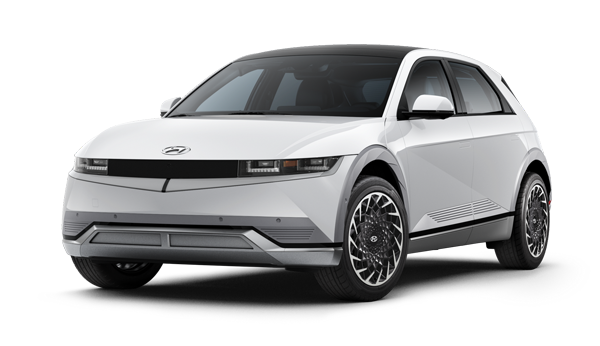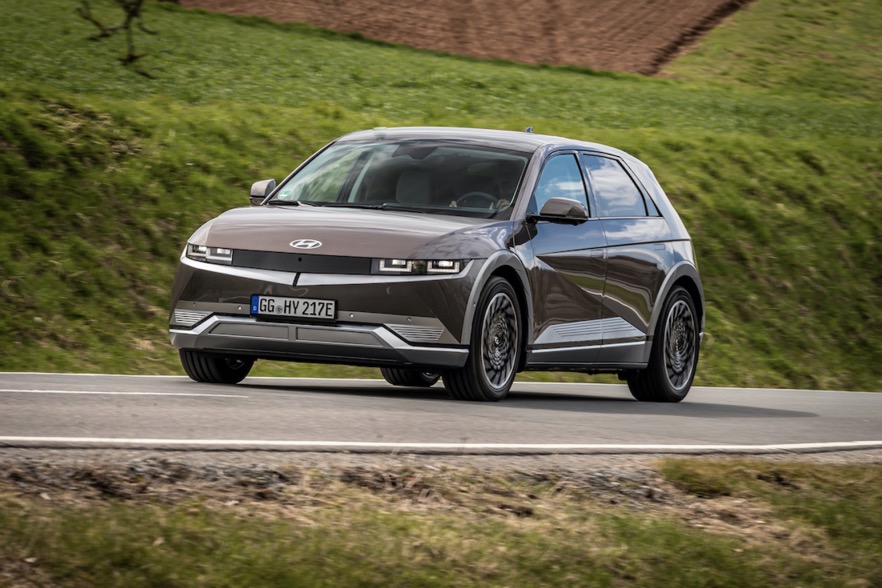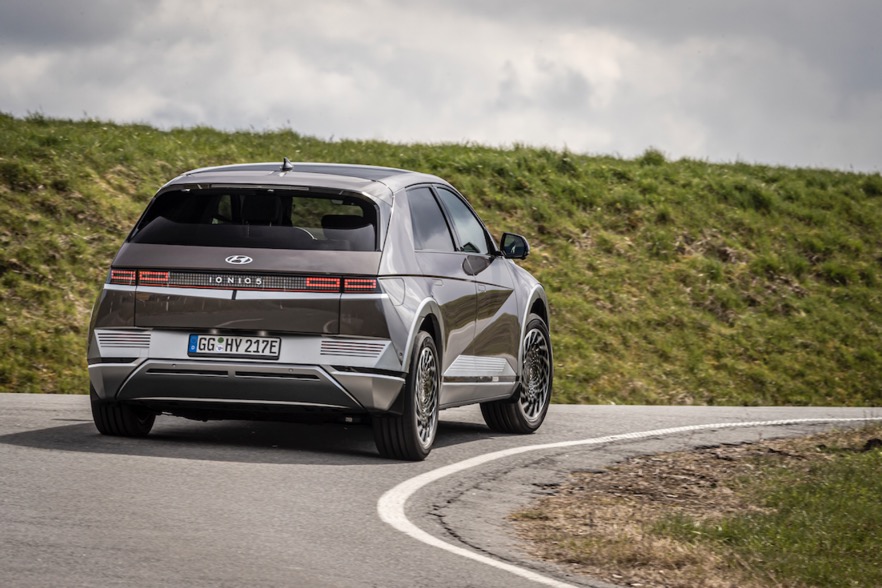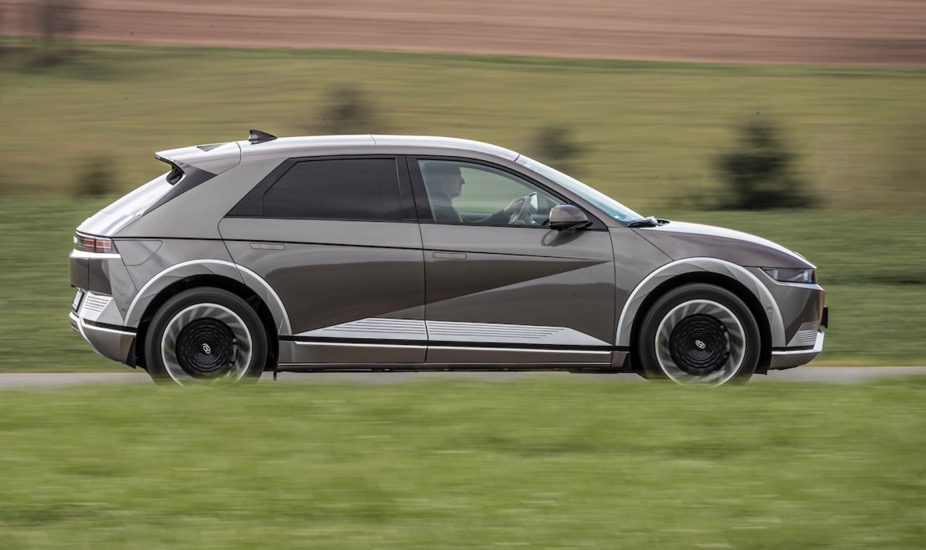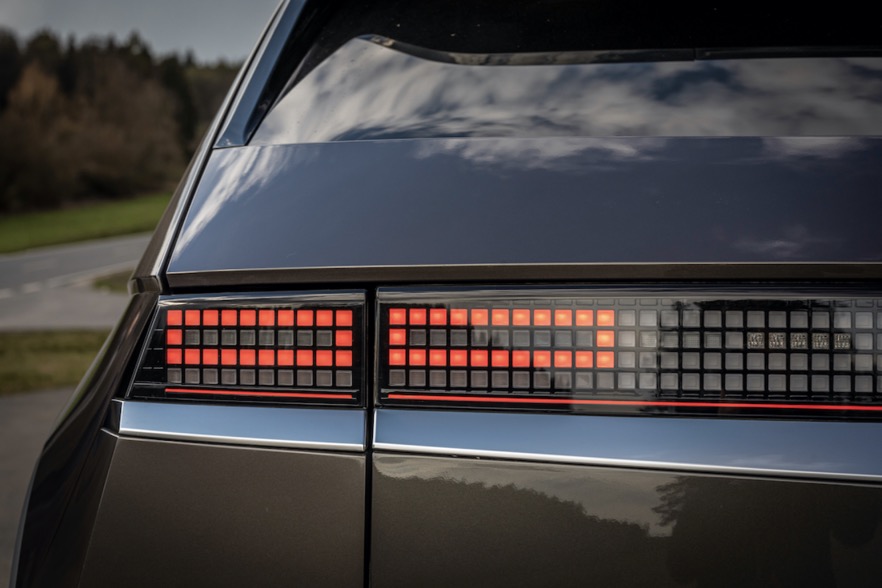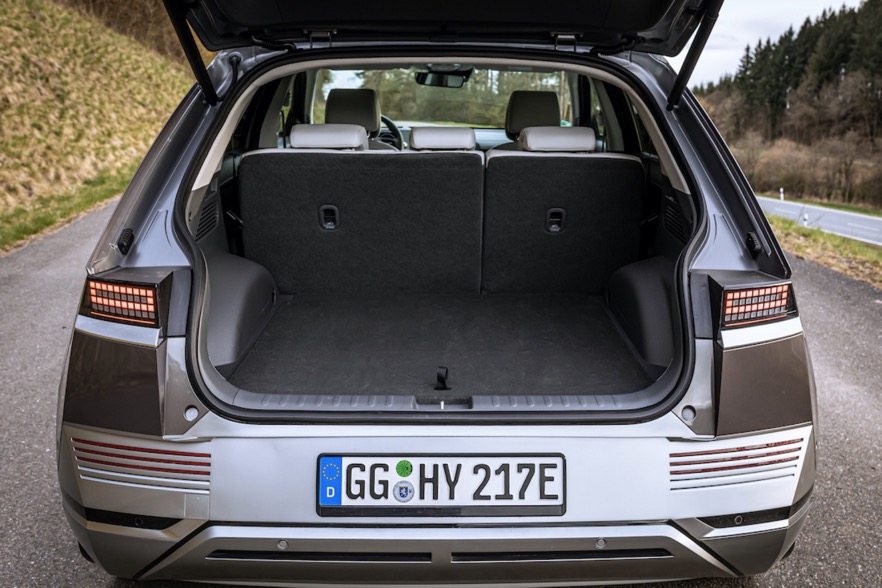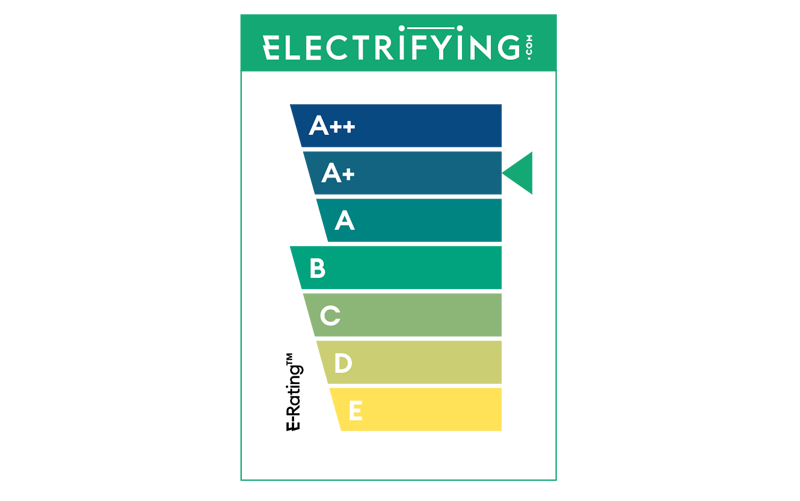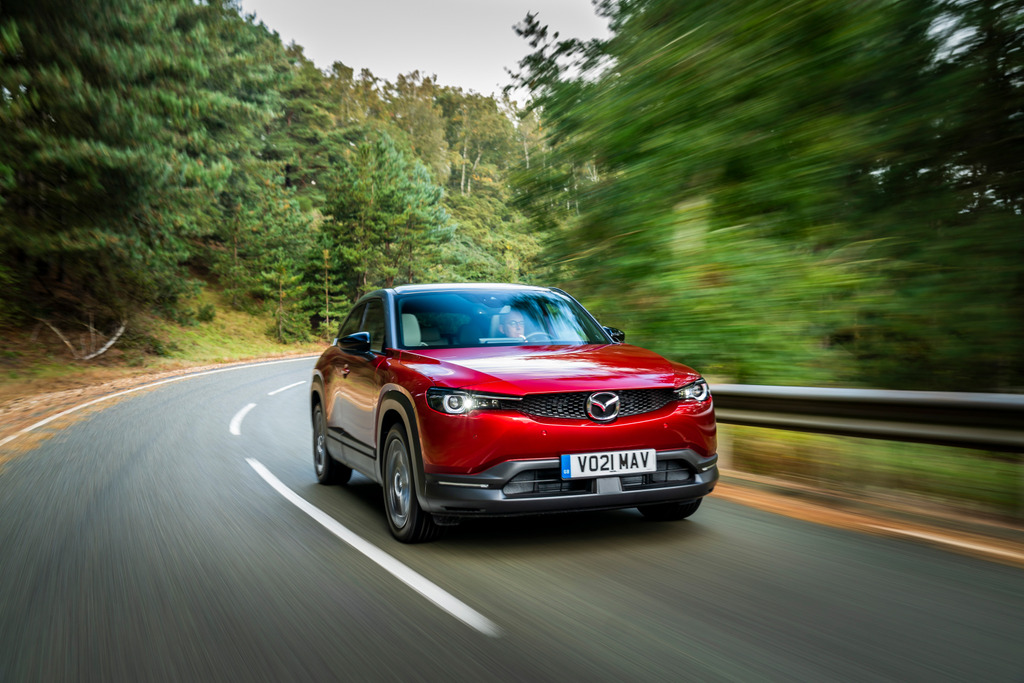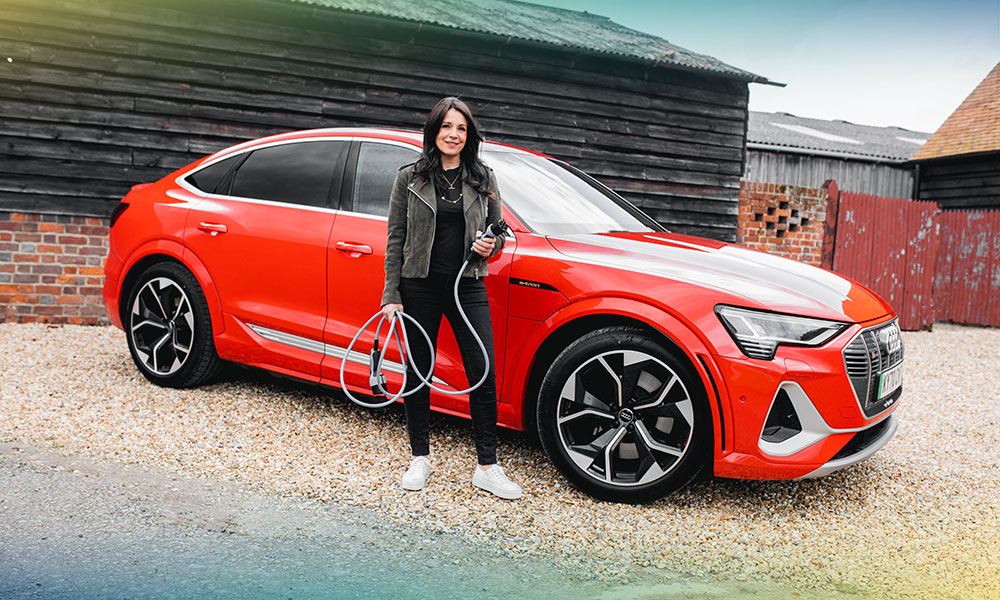The styling is much bolder than almost any other electric car you can buy, with pop out door handles like you’d find on a Jaguar I-Pace and LED lighting which is both efficient and good-looking.
It’s bigger than it appears in photos though – this is not the same size as an ID.3 or Leaf - at 4.64 metres long and 1.89 metres wide, the IONIQ 5 is bigger than a Land Rover Discovery Sport and very similar all round to a Jaguar I-Pace. Even inside, Hyundai goes bigger than most competitors. The fact that electric cars are more spacious than conventional vehicles is not new, as the motors and battery can be placed anywhere in the car, giving designers freedom to open up the inside to create room for passengers. It means there is a huge amount of space, even for tall passengers in the rear.
There is also a lot of variability. Not only the rear seat can be moved - electrically - to give the best balance between rear legroom and luggage space, but there is also a sliding centre console between the seats which can serve front or rear occupants. The boot is an SUV-sized 527 litres and there is another 100 litres of storage under the bonnet. That boot is quite shallow and flat though, whcih will limit your ability to carry pot plants and sofas back from Ikea.
Hyundai is not only relying on the spectacular design of the IONIQ 5 to make rivals look obsolete though. The car is built from the ground-up as an electric car to make it as efficient and uncompromised as possible. It is already one step further advanced than the likes of VW by having 800 volt running gear.
This allows the car to be more efficient and charge much faster than most electric cars, which rely on 400v systems. Only the Porsche Taycan and Audi e-tron GT have similar set ups - but cost double the price of the IONIQ 5.
It means the Hyundai really scores at the charging station. Find one of the new generation 350kW rapid chargers which are slowly appearing at service stations and the battery of the IONIQ 5 will fill from 10 to 80 percent in 18 minutes. A quick ‘get you home’ splash of 60 miles’ worth can be added within five minutes. That’s barely enough time for a splash’n’dash of your own.
To make those visits less frequent, the Koreans have worked hard on energy management. The IONIQ 5 is available with solar cells, which in sunnier climates can supply enough electricity for 1,200 miles per year. And where other vehicles only have USB and 12V sockets, the Hyundai introduces ‘vehicle-to-load’ technology. It means the battery power can be tapped from the outside via a special (£365) adapter. For example, the Hyundai driver can run a fridge at the campsite, cool the beer at the barbecue, run power tools at remote locations or, if necessary, give another electric car a charging boost. You probably won’t see the AA or Green Flag running these as recovery vehicles, but it’s a very useful option to have.
Hyundai offers the IONIQ 5 in several configurations with either a single or double electric motor for rear or all-wheel drive. There will be two battery options too, with 58 kWh or 72.6 kWh. In the best case, with the single motor and big battery, it will give a range of 298 miles according to the official figures.
If you value speed more than efficiency, the twin-motor model will do the 0-60 mph sprint in just over five seconds. That’s faster than any family car needs to be, especially since the IONIQ 5 is actually more of a limo than a sportscar. It is very refined and serene inside and not the sort of car which encourages you to go for a drive just for fun. If you prefer your cars to be exciting rather than relaxing, then we'd suggest trying a Kia EV6, which uses the same hardware but different styling and suspension tuning.
But the IONIQ 5 leaves a lasting impression with at least two characteristics: its turning circle is tiny for the size, because the front wheels can be turned further than you’d expect. Together with the 360 degree camera screen, parking becomes child's play.
And the Koreans have regulated the brake recuperation very well. In addition to the usual steps, which allow either mile-long sailing or a comparatively strong deceleration even without the use of the brake pedal, there is also an automatic mode, which is pleasingly close to one-pedal driving.
It’s true that Hyundai is confusing the pecking order among the electric cars with the IONIQ 5. It applies not only to appearance, drive and batteries – but also to the price. The cheapest versions will cost £37,000 and the first cars, which look like the model pictured here, will be £45,000. It means the Korean is more expensive than not only Skoda's Enyaq, but also the ID4. It makes it on a level with the Audi Q4 e-tron. That is a big ask for a Hyundai, but we think it might just be worth it.











